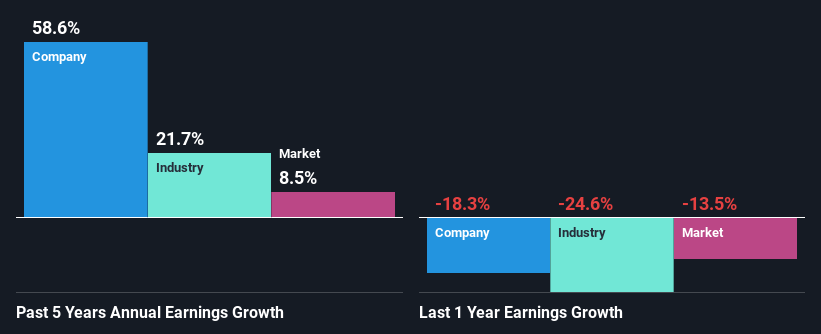SKY Network Television’s (NZSE:SKT) stock is up by a considerable 19% over the past three months. Given the company’s impressive performance, we decided to study its financial indicators more closely as a company’s financial health over the long-term usually dictates market outcomes. Specifically, we decided to study SKY Network Television’s ROE in this article.
Return on Equity or ROE is a test of how effectively a company is growing its value and managing investors’ money. In short, ROE shows the profit each dollar generates with respect to its shareholder investments.
See our latest analysis for SKY Network Television
How Is ROE Calculated?
The formula for return on equity is:
Return on Equity = Net Profit (from continuing operations) ÷ Shareholders’ Equity
So, based on the above formula, the ROE for SKY Network Television is:
12% = NZ$51m ÷ NZ$441m (Based on the trailing twelve months to June 2023).
The ‘return’ is the yearly profit. One way to conceptualize this is that for each NZ$1 of shareholders’ capital it has, the company made NZ$0.12 in profit.
What Is The Relationship Between ROE And Earnings Growth?
We have already established that ROE serves as an efficient profit-generating gauge for a company’s future earnings. Depending on how much of these profits the company reinvests or “retains”, and how effectively it does so, we are then able to assess a company’s earnings growth potential. Assuming all else is equal, companies that have both a higher return on equity and higher profit retention are usually the ones that have a higher growth rate when compared to companies that don’t have the same features.
SKY Network Television’s Earnings Growth And 12% ROE
To begin with, SKY Network Television seems to have a respectable ROE. And on comparing with the industry, we found that the the average industry ROE is similar at 11%. Consequently, this likely laid the ground for the impressive net income growth of 59% seen over the past five years by SKY Network Television. We reckon that there could also be other factors at play here. For example, it is possible that the company’s management has made some good strategic decisions, or that the company has a low payout ratio.
As a next step, we compared SKY Network Television’s net income growth with the industry, and pleasingly, we found that the growth seen by the company is higher than the average industry growth of 22%.

Earnings growth is a huge factor in stock valuation. It’s important for an investor to know whether the market has priced in the company’s expected earnings growth (or decline). By doing so, they will have an idea if the stock is headed into clear blue waters or if swampy waters await. Has the market priced in the future outlook for SKT? You can find out in our latest intrinsic value infographic research report.
Is SKY Network Television Efficiently Re-investing Its Profits?
SKY Network Television has a three-year median payout ratio of 38% (where it is retaining 62% of its income) which is not too low or not too high. This suggests that its dividend is well covered, and given the high growth we discussed above, it looks like SKY Network Television is reinvesting its earnings efficiently.
Moreover, SKY Network Television is determined to keep sharing its profits with shareholders which we infer from its long history of paying a dividend for at least ten years. Looking at the current analyst consensus data, we can see that the company’s future payout ratio is expected to rise to 56% over the next three years. However, the company’s ROE is not expected to change by much despite the higher expected payout ratio.
Conclusion
Overall, we are quite pleased with SKY Network Television’s performance. Specifically, we like that the company is reinvesting a huge chunk of its profits at a high rate of return. This of course has caused the company to see substantial growth in its earnings. With that said, on studying the latest analyst forecasts, we found that while the company has seen growth in its past earnings, analysts expect its future earnings to shrink. Are these analysts expectations based on the broad expectations for the industry, or on the company’s fundamentals? Click here to be taken to our analyst’s forecasts page for the company.
Have feedback on this article? Concerned about the content? Get in touch with us directly. Alternatively, email editorial-team (at) simplywallst.com.
This article by Simply Wall St is general in nature. We provide commentary based on historical data and analyst forecasts only using an unbiased methodology and our articles are not intended to be financial advice. It does not constitute a recommendation to buy or sell any stock, and does not take account of your objectives, or your financial situation. We aim to bring you long-term focused analysis driven by fundamental data. Note that our analysis may not factor in the latest price-sensitive company announcements or qualitative material. Simply Wall St has no position in any stocks mentioned.
Source link
credite

